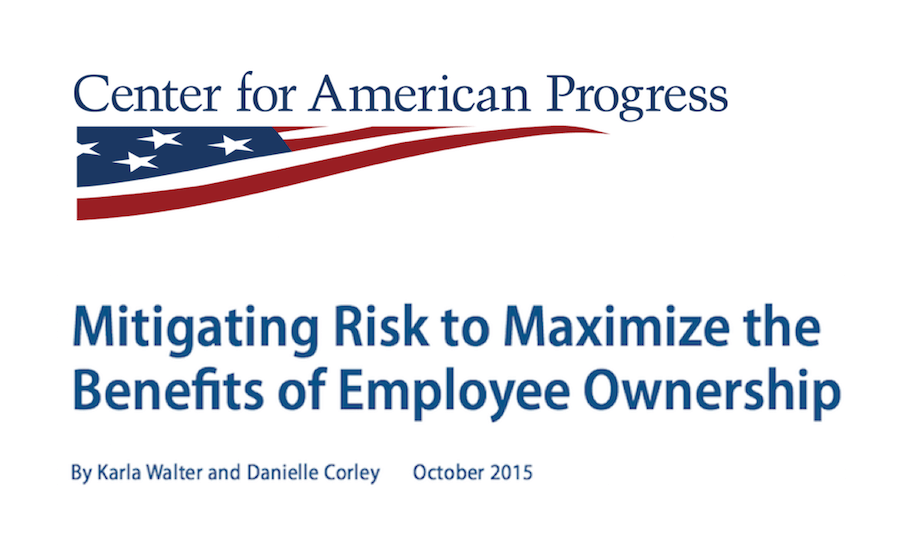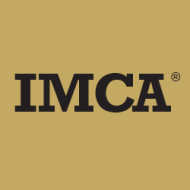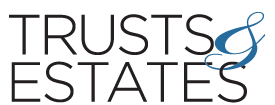StockShield is Certified for Fiduciary Excellence
Independent assessment demonstrates adherence to best fiduciary practices

The Centre for Fiduciary Excellence (CEFEX) has certified the investment fiduciary practices of StockShield as adhering to a global standard of excellence for Investment Stewards. StockShield is the manager of a portfolio risk solution for Employee Stock Ownership Plans (ESOPs) called the ESOP Protection Trust.
The CEFEX standard of excellence for Investment Stewards is based on 21 fiduciary practices that seek to increase long-term investment performance through excellence in fiduciary investment management. The practices also help uncover investment and/or procedural risk, which may assist in prioritizing investment management projects. CEFEX Managing Director Carlos Panksep said, “Through CEFEX’s independent assessment, the certification provides assurance to stakeholders that in the management of the investments within the ESOP Protection Trust, StockShield has demonstrated adherence to the industry’s best fiduciary practices.”
In conjunction with the certification process, Rehmann Financial, LLC, conducted incremental assessment activities including a review of documents and management/oversight procedures for the ESOP Protection Trust. Rehmann Financial Director of Consulting Services Gerald Wernette, CPA, CEBS, AIFA®, C(k)P™ said, “While ESOPs lack diversification – the hallmark of prudent management of ERISA retirement plans – the ESOP Protection Trust substantially mitigates the associated risks by injecting cash into ESOPs that suffer catastrophic losses on company stock.”
The 21 fiduciary practices are based on the fi360 Inc. publication Prudent Practices for Investment Stewards and are substantiated by legislation, case law, and regulatory opinion letters involving the Employee Retirement Income Security Act (ERISA), Uniform Prudent Investor Act (UPIA), Uniform Prudent Management of Institutional Funds Act (UPMIFA) and the Uniform Management of Public Employee Retirement Systems Act (MPERS) in the U.S. A summary of the fiduciary practices can be viewed by clicking on StockShield’s on-line CEFEX certificate, available at www.cefex.org.
The annual certification process involves a detailed review of documents, investments, and procedures followed by on-site interviews with key personnel. A full copy of the standard is available at www.fi360.com. More information on StockShield is available at www.stockshield.com.
About CEFEX:
CEFEX, Centre for Fiduciary Excellence, LLC, an fi360 company, is an independent certification organization. CEFEX works closely with industry experts to provide comprehensive assessment programs to improve the fiduciary practices of investment stewards, advisors, recordkeepers, administrators and managers. CEFEX has offices in Pittsburgh, PA and Toronto, Canada.
Top Money Managers Urge Capital Preservation
Bill Gross and Jeffrey Gundlach describe investment priorities

Bill Gross, former manager of the world’s largest bond fund, recommends investors focus on protecting their money in 2016 rather than reaching for higher returns. Gross has been critical of central bank efforts to stimulate the global economy by printing money, comparing central banks to “casinos that print money as if they were manufacturing endless numbers of chips that they’ll never have to redeem.” For these and other reasons, Gross warns of a potential wipeout in equities: “One day the negative feedback loop on the real economy will halt the ascent of stock and bond prices and investors will look around like Wile E. Coyote wondering how far is down.” Gross has urged investors to gradually de-risk portfolios, placing greater emphasis on “return of your money than a double-digit return.”
Gross’ view is echoed by other notable market heavyweights. Jeffrey Gundlach, manager of the $52 billion DoubleLine Total Return Bond Fund, says, “This is a capital-preservation market, not a money-making environment.” Blackrock’s top investment strategists (responsible for the management of $4.5 trillion in assets) recently stated investors should expect “little or no” appreciation in U.S. equities in 2016. Mohamed El-Erian, Allianz’s Chief Economic Adviser, is also wary of the current investing environment, primarily because of what he deems “unhinged markets” in commodities, emerging market currencies, and high-yield bonds.
StockShield specializes in risk-managing portfolios with concentrated stock positions, including those of accredited investors and Employee Stock Ownership Plans. Investors can substantially reduce the risk of catastrophic losses to their portfolios while still participating in any capital appreciation and dividend income equities may produce in 2016 and beyond.
Center for American Progress Issues Report on Mitigating Risks of ESOPs
Think tank says inclusive capitalism should be encouraged while mitigating the associated risks

The Center for American Progress (“CAP”) has released a comprehensive 32-page report entitled “Mitigating Risk to Maximize the Benefits of Employee Ownership.”
The report is intended to “start a dialogue about how to better protect workers while still offering the benefits of inclusive capitalism.” It offers a thorough evaluation of the financial benefits and risks associated with ESOPs, particularly for employee-owners who are vital to the ESOP’s success.
Drawing on a large body of research, the report concludes that, from a public policy perspective, the risks associated with ESOPs are outweighed by the wealth-generating benefits ESOPs regularly produce for employee-owners. This conclusion is based primarily on two considerations: (a) unlike most public companies, ESOPs allow employees to directly participate in corporate profitability; and (b) because of employee loyalty, tenure, and motivation, ESOPs are less likely to experience catastrophic failures as compared to their non-ESOP peers, although the report acknowledges that some failures are inevitable, even among ESOP companies.
After reaching this conclusion, the report considers how ESOPs can be further improved by focusing on mitigating the risks associated with concentrated stock positions. The report correctly points out that although ESOPs have a strong historical track record of growth and stability, no business is immune to failure and, when they do fail, the consequences for ESOP participants can be more severe than the consequences for equity holders in non-ESOP companies because their job security will be affected as well as their investment in employer stock.
It is this vulnerability of ESOPs and their participants that the report fully considers in its concluding pages. The report commends ESOPs for pursuing various ways of reducing risk to employee-owners, including participation in the ESOP Protection Trust. The report doesn’t fully explore the differences between traditional means for dealing with risk, which are generally focused on mitigating the risk of lack of diversification, and the EPT’s approach, which reimburses losses on concentrated stock positions when they occur, regardless of the source of the losses.
Further Reading
- Mitigating Risk to Maximize the Benefits of Employee Ownership View Article
Bankruptcy of Grocery Chain Demonstrates Need for ESOP Protection
Consequences of ESOP Failure are Severe to ESOP Beneficiaries

Thankfully, many American ESOP companies have developed into strong successful companies able to deliver impressive retirement benefits to their employee participants. This reality was once only a dream of ESOP visionaries such as Louis Kelso. Kelso wished to provide American employees a chance to invest in their employer over the long haul and reap the rewards of that investment throughout their retirement years.
As numerous as these ESOP success stories are – and as uplifting as it is to exhibit pride in the success of any ESOP company – there are also some ESOP “wipeouts” that shouldn’t be neglected. When an ESOP company fails or loses much of its value, its employee owners often absorb much of the collateral damage. This is unfortunate not only because employee owners dedicated their entire adult lives to the ESOP but also because they are least able to absorb a loss of asset value as large as that involved in an ESOP failure. Theoretically, lawyers and others may seek to recover assets, judgments, insurance proceeds, overdue receivables, and so on for the benefit of ESOP beneficiaries. Even when these efforts are successful – and they often aren’t – they take years to materialize and result in only pennies-on-the-dollar recovery to ESOP beneficiaries and participants.
A recent ESOP bankruptcy illuminates these various concepts. Iowa-based ESOP Dahl’s Foods Inc. – which was ranked in the Top 100 largest majority employee-owned companies (97% ESOP-owned) – declared bankruptcy in November 2014. It then quickly sold all of its real estate and operational assets to pay off its debts. Months later, it was determined that the ESOP may have a “small pool of money” left to distribute to the ESOP employee beneficiary participants. Specifically, some $1 million may be available to distribute to some 900 ESOP employee participants (approximately $1,000 per participant).
The attorneys handling the bankruptcy noted that this was a rare instance where any assets were available for ESOP participants; in most cases, all assets are used to satisfy the claims of creditors to the ESOP company. In an ESOP bankruptcy, ESOP employee participants are last to be paid any money generated from asset sales; they are paid only after secured and unsecured creditors’ debts are satisfied and other claims against the ESOP are resolved. The attorneys handling the Dahl’s Foods bankruptcy also opined that some other sources of money could be available to be distributed to ESOP participants, with the caveat that the resolution of the claims, lawsuits, and documentation required to gather the money could take several years.
The ESOP Protection Trust is designed to avoid many of the undesirable outcomes seen in the Dahl’s Foods Inc. bankruptcy. In the event of a complete “wipeout” of the value of company stock, the Trust may restore up to half of the lost value. The ESOP Protection Trust is designed to provide a meaningful recovery, not just the “dregs” and “crumbs” left over after everyone else has had their claim against the ESOP company resolved. The Trust seeks to accomplish loss reimbursement in a timely manner, without all the complications, expense, and uncertainty involved in lawsuits and other claim resolution procedures.
Founded in 1931 by Wolverine Thilbert Dahl, the first Dahl’s stores were located in Des Moines. The company was ahead of its time in facilitating drive-through grocery pickups and debit card purchases. It expanded into Kansas before suffering from competitive pressure generated by regional groceries Hy-Vee (also one of the Top 100 largest majority employee-owned companies) and Fareway as well as national mega stores Target and Walmart.
Further Reading
- New Trust Protects Fiduciaries of ESOP Companies View Article
Investments & Wealth Monitor Publishes Article on Stock Protection Fund
Authors Explain How SPF Complements Exchange Funds

In the May-June issue of Investments & Wealth Monitor, a bimonthly educational magazine written by award-winning authors throughout the financial industry, Thomas Boczar and Elizabeth Ostrander of Intelligent Edge Advisors published a 9-page article entitled Stock Protection Funds: The Inverse of Exchange Funds. The article discusses the problem of stock concentration, the Stock Protection Fund as a solution to that problem, and the specific reasons why the SPF serves as an optimal risk management solution for concentrated stockholders.
Investments & Wealth Monitor is published by the Investment Management Consultants Association (IMCA). IMCA sets the standards and practices for the investment management consulting profession and provides investment consultants and wealth managers with the credentials and tools required to best serve their clients. As of June 30, 2015, IMCA served 6,939 CIMA certificants (Certified Investment Management Analysts) and 848 CPWA professionals (Certified Private Wealth Advisors).
Trusts & Estates Publishes Article on Stock Protection Fund
Authors Explain Benefits of New Strategy

In its April 2015 issue, Trusts & Estates, a highly-regarded peer-review journal and website for wealth management professionals, published a 10-page article entitled Stock Protection Trusts: Use an SPT to Manage Concentration Risk. The article was authored by Thomas Boczar and Elizabeth Ostrander of Intelligent Edge Advisors. The article discusses the problem of stock concentration, the innovation of Stock Protection Trusts as a solution to that problem, and the specific reasons why the SPT serves as an optimal risk management solution for concentrated stockholders.